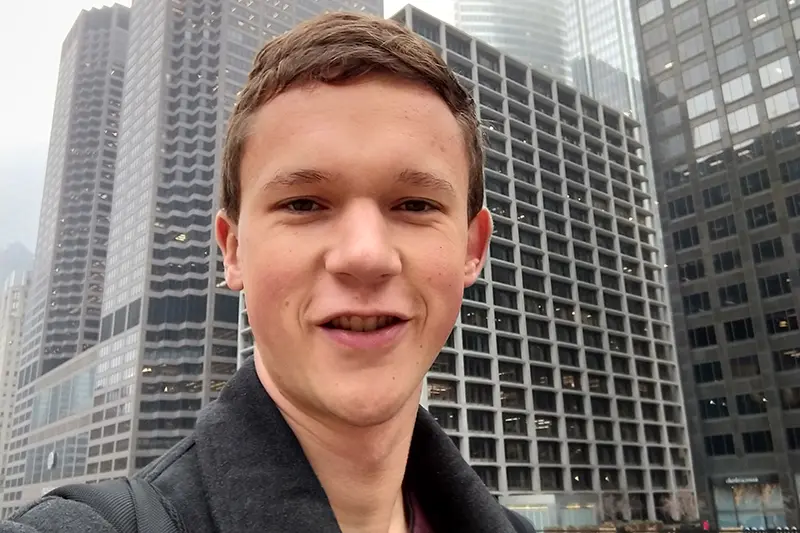-
-
- Financial Aid
- Financial Aid
- Scholarships
- Loans
- Grants
- Federal Work Study
- Additional Resources
-

From groundbreaking in-class projects to competitive internships, Taylor’s Engineering & Physics Department gives students many opportunities for professional and personal growth. Caleb Miller ’21 is putting his extensive list of experiences to work as he pursues a PhD in experimental atmospheric physics.
While at Taylor, Caleb Miller majored in Engineering with an Electrical concentration. Reflecting on his time here, he believed it prepared him for future engineering pursuits related to atmospheric science.
“I think my physics and engineering training was very good,” Miller said. “Taylor’s emphasis on public speaking was also very important. I learned how to present my findings in a compelling way. Another thing was that we had a 1.5-year-long junior-senior capstone project, which was longer than engineering projects at most other universities. I learned what time management looks like for larger projects.”
For the capstone project, Miller and his team built a 3D-printing robot that has potential to create habitable structures on the planet Mars.
Throughout his time at Taylor, Miller worked in the Information Technology department, including spearheading a campus mapping project to locate communications pathways and import the data into ArcGIS, a geographic information system. Miller helped input a massive amount of data into this mapping system—including the locations of network access points, printers, utility lines, and more—that allow the University to plan future buildings and infrastructure improvements.
Miller is pursuing his PhD at the University of Reading in Reading, England. He became interested in graduate meteorological studies as a result of a Taylor practicum. David Patterson '09, also an engineer, recruited Miller to work on an atmospheric physics summer internship.
“He wanted to hire a couple of students to work on his project, which was building a weather balloon and sending it up into the atmosphere,” Miller said.
Miller’s typical day as a PhD student involves writing code to analyze data, doing fieldwork, creating and improving meteorological instruments, and participating in research groups. His studies allow him to meet with other meteorologists.
“One fun thing was last summer I went to a conference in Tel Aviv to present my research so far,” Miller said. “It was a cool experience to meet other researchers who study lightning. We stopped by Jerusalem as well.”
Miller appreciates the positive impact of the community that he experienced at Taylor, especially in close-knit connections in his residence hall, Breuninger Hall. Miller’s experiences ultimately grew his faith in the midst of struggle.
“A lot of people helped me become who I am today,” he said. “I had to lean on God and trust in Him, but many amazing people and mentors helped me along the way.”
Miller encourages students who are interested in Physics & Engineering to go the extra mile in gaining understanding and experience in the field.
“Students should really try to understand the class concepts at a more detailed level than just to pass,” he said. “Seek to understand why things work the way they do.”
Taylor University’s undergraduate programs in Physics & Engineering give you the knowledge and skills to solve real-world problems with state-of-the-art technology. Christ-centered, missions-minded professors will mentor you through designing and developing projects that change the world for God’s glory. You’ll have all the necessary tools as an engineer, no matter your path. Get started now by scheduling a campus visit. You’ll get to see our labs, meet faculty and students, and find out if our program is right for you.